About Nepal
About Nepal 2:42 AM
Nepal
The following information was obtained from:
Wikipedia the free Encyclopedia
Nepal, officially the Federal Democratic Republic of Nepal, also Republic of Nepal, is a landlocked country in South Asia. It is bordered by China to the north and by India to the south, east and west. The Himalaya mountain range runs across Nepal's northern and western parts, and eight of the world's ten highest mountains, including the highest, Mount Everest, are within its territory.
The modern state was formed with the Unification of Nepal by Prithvi Narayan Shah on December 21, 1768. Prior to 2006, Nepal was a kingdom. It was also the only modern nation with Hinduism as its official religion Nepal is now a federal democratic republic. Its recent history has involved struggles for democratic government with periods of direct monarchic rule. From 1996 until 2006, Nepal suffered from a Civil War between government forces and guerrillas of the Communist Party of Nepal (Maoist).
On December 28, 2007, the Interim Parliament passed a bill and declared Nepal to be a Federal Democratic Republic. The first meeting of the Constituent Assembly officially implemented that declaration on May 28, 2008.
Nepal is a multi-cultural, multi-linguistic and multi religious country. For a relatively small country, Nepal has a diverse landscape, ranging from the humid Terai plains in the south to the mountainous Himalayas in the north, which makes it a major tourist destination. Hinduism is practiced by a huge majority of the people, but the country also has a strong Buddhist tradition; Lumbini, the birthplace of Buddha Siddhartha Gautama is located in the Terai, one of the three regions of Nepal.
 The capital Kathmandu is the largest city in the country. The official language is Nepali and the state currency is the Nepalese Rupee (NPR) Nepal's Flag is the only national flag in the world that is non-quadrilateral in shape. It is believed that Lord Vishnu had organized the Nepali people and given them this flag, with the sun and moon as emblems on it. In a Hindu Purana, it is written that it was Lord Shiva who handed the flag to Lord Vishnu, and then Lord Vishnu to Lord Indra, for the purpose for battling demons. The official version of the flag states the two ruling families in Nepal, the Shahs and the Ranas. The upper crescent sun signifies the Shah ruling faction and the below Sun signifies the Rana family. However, over the years the flag signifies the importance of Nepal as a Hindu country and Nepal will continue to exists as long as the sun and the moon.
The capital Kathmandu is the largest city in the country. The official language is Nepali and the state currency is the Nepalese Rupee (NPR) Nepal's Flag is the only national flag in the world that is non-quadrilateral in shape. It is believed that Lord Vishnu had organized the Nepali people and given them this flag, with the sun and moon as emblems on it. In a Hindu Purana, it is written that it was Lord Shiva who handed the flag to Lord Vishnu, and then Lord Vishnu to Lord Indra, for the purpose for battling demons. The official version of the flag states the two ruling families in Nepal, the Shahs and the Ranas. The upper crescent sun signifies the Shah ruling faction and the below Sun signifies the Rana family. However, over the years the flag signifies the importance of Nepal as a Hindu country and Nepal will continue to exists as long as the sun and the moon.
Geography
The arid and barren Himalayan landscapeNepal is of roughly trapezoidal shape, 800 kilometres (500 mi) long and 200 kilometres (125 mi) wide, with an area of 147,181 square kilometres (56,827 sq mi). Nepal is commonly divided into three physiographic areas: the Mountain, Hill, and Terai Regions. These ecological belts run east-west and are bisected by Nepal's major river systems. Nepal is roughly the same size as the US state of Michigan.
The Terai Plains bordering India are part of the northern rim of the Indo-Gangetic plains. They were formed and are fed by three major rivers: the Kosi, the Narayani (India's Gandak River), and the Karnali. This region has a hot, humid climate.
The Hill Region (Pahad in Nepali) abuts the mountains and varies from 1,000 to 4,000 metres (3,300–13,125 ft) in altitude. Two low mountain ranges, the Mahabharat Lekh and Shiwalik Range (also called the Churia Range) dominate the region. The hilly belt includes the Kathmandu Valley, the country's most fertile and urbanised area. Unlike the valleys, elevations above 2,500 metres (8,200 ft) are sparsely populated.
The Mountain Region contains the highest region in the world. The world's highest mountain, Mount Everest (Sagarmatha in Nepali) at 8,850 metres (29,035 ft) is located on the border with China. Eight of the world's fourteen highest mountains are located in Nepal. Kanchenjunga, the world's third highest peak, is also located in Nepal. Deforestation is a major problem in all regions, with resulting erosion and degradation of ecosystems.
Nepal has five climatic zones, broadly corresponding to altitude. The tropical and subtropical zones lie below 1,200 metres (3,940 ft), the temperate zone 1,200 to 2,400 metres (3,900–7,875 ft), the cold zone 2,400 to 3,600 metres (7,875–11,800 ft), the subarctic zone 3,600 to 4,400 metres (11,800–14,400 ft), and the arctic zone above 4,400 metres (14,400 ft). Nepal experiences five seasons: summer, monsoon, autumn, winter and spring. The Himalaya blocks cold winds from Central Asia in winter, and forms the northern limit of the monsoon wind patterns.
Although Nepal shares no boundary with Bangladesh, the two countries are separated by a narrow strip of land about 21 kilometre (13 mi) wide, called the Chicken's Neck. Efforts are underway to make this area a free-trade zone.
Mt Everest is the tallest mountain in the world, and is situated between Nepal and Tibet. The South-east ridge on the Nepalese side of the mountain is technically easier to climb, which is why so many keen climbers are pouring in through Nepal to climb Mt Everest. Also other Mountains including Annapurna I, II, III and IV are located in the Annapurna Mountain Range in Nepal.
Economy
A one-rupee banknoteAgriculture sustains 76% of the population and accounts for about 39% of the GDP; services comprise 41%, and industry 22%. Hilly and mountainous terrain in the northern two-thirds of the country has made the building of roads and other infrastructure difficult and expensive. There were just over 8,500 km of paved roads, and one 59 km railway line in the south in 2003. Aviation is in a better state, with 48 airports, ten of them with paved runways. There is less than one telephone per 19 people; landline services are not adequate nationwide but concentrated in cities and district headquarters; mobile telephony is in a reasonable state in most parts of the country with increased accessibility and affordability. There were around 175,000 Internet connections in 2005, but after the imposition of the "state of emergency", intermittent losses of service were reported. Uninterrupted Internet connections have resumed after the brief period of confusion as Nepal's second major people's revolution took place to overthrow the King's absolute power.
Its landlocked location (actually landlinked, since Nepal is not locked) and technological backwardness and the long-running civil war have also prevented Nepal from fully developing its economy. The country receives foreign aid from India, Japan, United Kingdom, United States, European Union, China, Switzerland, and Scandinavian Countries. The government's budget is about US$1.153 billion, with expenditures of $1.789bn (FY05/06). The inflation rate has dropped to 2.9% after a period of higher inflation during the 1990s. The Nepalese Rupee has been tied to the Indian Rupee at an exchange rate of 1.6 for many years. Since the loosening of exchange rate controls in the early 1990s, the black market for foreign exchange has all but disappeared. A long-standing economic agreement underpins a close relationship with India.
The distribution of wealth among people is consistent with that in many developed and developing countries: the highest 10% of households control 39.1% of the national wealth and the lowest 10% control only 2.6%.
Terraced farming on the foothills of the HimalayasNepal's workforce of about 10 million suffers from a severe shortage of skilled labour. Agriculture employs 81% of the workforce, services 16% and manufacturing/craft-based industry 3%. Agricultural produce——mostly grown in the Terrai region bordering India——includes rice, corn, wheat, sugarcane, root crops, milk, and water buffalo meat. Industry mainly involves the processing of agricultural produce, including jute, sugarcane, tobacco, and grain. The spectacular landscape and deep, exotic culture of Nepal represents considerable potential for tourism, but growth in this export industry has been stifled by recent political events. The rate of unemployment and underemployment approaches half of the working-age population. Thus many Nepalese move to India in search of work, the Gulf countries and Malaysia being new sources of work. Poverty is acute.[10] Nepal receives US$50 million a year through the Gurkha soldiers who serve in the Indian and British armies and are highly esteemed for their skill and bravery. The total remittance value is worth around 1 billion USD, including money sent from Persian Gulf and Malaysia, who combined employ around 700,000 Nepalese.
Nepal's GDP for the year 2005 is estimated at just over US$39 billion (adjusted to Purchasing Power Parity), making it the 83rd-largest economy in the world. Per-capita income is around US$1,402, ranked 163rd. Nepal's exports of mainly carpets, clothing, leather goods, jute goods and grain total $822 million. Import commodities of mainly gold, machinery and equipment, petroleum products and fertilizer total US$2 bn. India (53.7%), the US (17.4%), and Germany (7.1%) are its main export partners. Nepal's import partners include India (47.5%), the United Arab Emirates (11.2%), China (10.7%), Saudi Arabia (4.9%), and Singapore (4%).
Note of Nepal :
Nepali culture is very similar to the cultures of Tibet, and India, which borders to the south. There are similarities in clothing, language and food. A typical Nepali meal is dal-bhat - boiled dal served with rice and vegetables, and some spicy relish. This is consumed twice daily, once in the morning and again after sunset. Between these main meals, snacks such as chiura (beaten rice) and tea are consumed. Apart meat, eggs, and fish are considered a treat. In the mountainous region the staple diet are based on wheat, maize, millet and potatoes. Millet-based alcoholic drinks known as "Tongba" and other cereal based alcohol are popular, including chhaang and the distilled rakshi. The Newar community enjoys its own special Newari cuisine.
Traditional Nepali folklore retains a strong influence in society and its stories are widely acted out in dance and music. Culture of different ethnic groups are rich in their own ways. The Newari culture is the original and distinguished culture of Kathmandu. Most of the festivals observed in the country are the Newari festivals. The Newar people are well known for masked dance that tell stories of the gods and heroes. The associated music is percussion-based, sometimes with flutes or shawm accompanying the intense, nasal vocal lines. Musical styles are a variety of pop, religious and folk music, among other styles. Musical genres from Tibet and India have had a strong influence on traditional Nepali music. Women, even of the musician castes, are less likely than men to play music, except in specific situations such as traditional all-female wedding parties.
Houses in rural parts of Nepal are made up of stones and clay.The sarangi, a four-stringed, hand-carved instrument is usually played by wandering minstrels. Since the sixties, Nepali rock or rock music, sung to Nepali lyrics, has become popular among youth. Also catching on fast is Nepali rap and Nepali reggae which has blossomed with the advent of the music video industry. There are also many heavy metal bands. Football is the most popular sport, followed by cricket and kabaddi. The Martyrs Memorial Football League is thenational football championship.
Traditional House in Parbat Beulibas
Television was only introduced to Nepal in the 1980s. Currently there are six television broadcasting channels: Nepal Television - the national television channel; NTV 2 Metro - a city channel owned by the government; and four private channels - Kantipur Television, Image Channel, Channel Nepal & Nepal 1. Also many other networks, particularly those that originate in India, are available with the installation of increasingly popular satellite dishes, although lack of electrification makes this difficult. Radio is listened to throughout the kingdom; as of 2000, there were 12 radio stations.
The Nepali year begins in mid-April and is divided into 12 months. Saturday is the official weekly day of rest. Main holidays include the National Day (birthday of the late king Tribhuvan) December 28, Prithvi Jayanti, (January 11), and Martyr's Day (February 18) and a mix of Hindu and Buddhist festivals[12] such as Teej, Dashai in autumn, and Tihar late autumn. Most marriages are arranged, and divorce is rare. Polygamy is banned by law; relatively isolated tribes in the north, such as the Dolpo, practise polyandry. Nepal has a rich tradition of ceremonies, such as nwaran (the christening of a child), and the Pasni, the day a child is first fed rice, and bratabandha (the penance ceremony) and gupha for prepubescent boys and girls, respectively. In Newari culture,bel bibaha, preadolescent girls are "married" to the bel fruit tree, ensuring that the girl becomes and remains fertile.
Most houses in rural Nepal are made up of a tight bamboo framework with mud and cow-dung walls. These dwellings remain cool in summers and retain warmth in the winter. Dwellings at higher altitudes are mostly timber-based.
The following information was obtained from:
Wikipedia the free Encyclopedia
Nepal, officially the Federal Democratic Republic of Nepal, also Republic of Nepal, is a landlocked country in South Asia. It is bordered by China to the north and by India to the south, east and west. The Himalaya mountain range runs across Nepal's northern and western parts, and eight of the world's ten highest mountains, including the highest, Mount Everest, are within its territory.
The modern state was formed with the Unification of Nepal by Prithvi Narayan Shah on December 21, 1768. Prior to 2006, Nepal was a kingdom. It was also the only modern nation with Hinduism as its official religion Nepal is now a federal democratic republic. Its recent history has involved struggles for democratic government with periods of direct monarchic rule. From 1996 until 2006, Nepal suffered from a Civil War between government forces and guerrillas of the Communist Party of Nepal (Maoist).
On December 28, 2007, the Interim Parliament passed a bill and declared Nepal to be a Federal Democratic Republic. The first meeting of the Constituent Assembly officially implemented that declaration on May 28, 2008.
Nepal is a multi-cultural, multi-linguistic and multi religious country. For a relatively small country, Nepal has a diverse landscape, ranging from the humid Terai plains in the south to the mountainous Himalayas in the north, which makes it a major tourist destination. Hinduism is practiced by a huge majority of the people, but the country also has a strong Buddhist tradition; Lumbini, the birthplace of Buddha Siddhartha Gautama is located in the Terai, one of the three regions of Nepal.
 The capital Kathmandu is the largest city in the country. The official language is Nepali and the state currency is the Nepalese Rupee (NPR) Nepal's Flag is the only national flag in the world that is non-quadrilateral in shape. It is believed that Lord Vishnu had organized the Nepali people and given them this flag, with the sun and moon as emblems on it. In a Hindu Purana, it is written that it was Lord Shiva who handed the flag to Lord Vishnu, and then Lord Vishnu to Lord Indra, for the purpose for battling demons. The official version of the flag states the two ruling families in Nepal, the Shahs and the Ranas. The upper crescent sun signifies the Shah ruling faction and the below Sun signifies the Rana family. However, over the years the flag signifies the importance of Nepal as a Hindu country and Nepal will continue to exists as long as the sun and the moon.
The capital Kathmandu is the largest city in the country. The official language is Nepali and the state currency is the Nepalese Rupee (NPR) Nepal's Flag is the only national flag in the world that is non-quadrilateral in shape. It is believed that Lord Vishnu had organized the Nepali people and given them this flag, with the sun and moon as emblems on it. In a Hindu Purana, it is written that it was Lord Shiva who handed the flag to Lord Vishnu, and then Lord Vishnu to Lord Indra, for the purpose for battling demons. The official version of the flag states the two ruling families in Nepal, the Shahs and the Ranas. The upper crescent sun signifies the Shah ruling faction and the below Sun signifies the Rana family. However, over the years the flag signifies the importance of Nepal as a Hindu country and Nepal will continue to exists as long as the sun and the moon.Geography
The arid and barren Himalayan landscapeNepal is of roughly trapezoidal shape, 800 kilometres (500 mi) long and 200 kilometres (125 mi) wide, with an area of 147,181 square kilometres (56,827 sq mi). Nepal is commonly divided into three physiographic areas: the Mountain, Hill, and Terai Regions. These ecological belts run east-west and are bisected by Nepal's major river systems. Nepal is roughly the same size as the US state of Michigan.
The Terai Plains bordering India are part of the northern rim of the Indo-Gangetic plains. They were formed and are fed by three major rivers: the Kosi, the Narayani (India's Gandak River), and the Karnali. This region has a hot, humid climate.
The Hill Region (Pahad in Nepali) abuts the mountains and varies from 1,000 to 4,000 metres (3,300–13,125 ft) in altitude. Two low mountain ranges, the Mahabharat Lekh and Shiwalik Range (also called the Churia Range) dominate the region. The hilly belt includes the Kathmandu Valley, the country's most fertile and urbanised area. Unlike the valleys, elevations above 2,500 metres (8,200 ft) are sparsely populated.
The Mountain Region contains the highest region in the world. The world's highest mountain, Mount Everest (Sagarmatha in Nepali) at 8,850 metres (29,035 ft) is located on the border with China. Eight of the world's fourteen highest mountains are located in Nepal. Kanchenjunga, the world's third highest peak, is also located in Nepal. Deforestation is a major problem in all regions, with resulting erosion and degradation of ecosystems.
Nepal has five climatic zones, broadly corresponding to altitude. The tropical and subtropical zones lie below 1,200 metres (3,940 ft), the temperate zone 1,200 to 2,400 metres (3,900–7,875 ft), the cold zone 2,400 to 3,600 metres (7,875–11,800 ft), the subarctic zone 3,600 to 4,400 metres (11,800–14,400 ft), and the arctic zone above 4,400 metres (14,400 ft). Nepal experiences five seasons: summer, monsoon, autumn, winter and spring. The Himalaya blocks cold winds from Central Asia in winter, and forms the northern limit of the monsoon wind patterns.
Although Nepal shares no boundary with Bangladesh, the two countries are separated by a narrow strip of land about 21 kilometre (13 mi) wide, called the Chicken's Neck. Efforts are underway to make this area a free-trade zone.
Mt Everest is the tallest mountain in the world, and is situated between Nepal and Tibet. The South-east ridge on the Nepalese side of the mountain is technically easier to climb, which is why so many keen climbers are pouring in through Nepal to climb Mt Everest. Also other Mountains including Annapurna I, II, III and IV are located in the Annapurna Mountain Range in Nepal.
Economy
A one-rupee banknoteAgriculture sustains 76% of the population and accounts for about 39% of the GDP; services comprise 41%, and industry 22%. Hilly and mountainous terrain in the northern two-thirds of the country has made the building of roads and other infrastructure difficult and expensive. There were just over 8,500 km of paved roads, and one 59 km railway line in the south in 2003. Aviation is in a better state, with 48 airports, ten of them with paved runways. There is less than one telephone per 19 people; landline services are not adequate nationwide but concentrated in cities and district headquarters; mobile telephony is in a reasonable state in most parts of the country with increased accessibility and affordability. There were around 175,000 Internet connections in 2005, but after the imposition of the "state of emergency", intermittent losses of service were reported. Uninterrupted Internet connections have resumed after the brief period of confusion as Nepal's second major people's revolution took place to overthrow the King's absolute power.
Its landlocked location (actually landlinked, since Nepal is not locked) and technological backwardness and the long-running civil war have also prevented Nepal from fully developing its economy. The country receives foreign aid from India, Japan, United Kingdom, United States, European Union, China, Switzerland, and Scandinavian Countries. The government's budget is about US$1.153 billion, with expenditures of $1.789bn (FY05/06). The inflation rate has dropped to 2.9% after a period of higher inflation during the 1990s. The Nepalese Rupee has been tied to the Indian Rupee at an exchange rate of 1.6 for many years. Since the loosening of exchange rate controls in the early 1990s, the black market for foreign exchange has all but disappeared. A long-standing economic agreement underpins a close relationship with India.
The distribution of wealth among people is consistent with that in many developed and developing countries: the highest 10% of households control 39.1% of the national wealth and the lowest 10% control only 2.6%.
Terraced farming on the foothills of the HimalayasNepal's workforce of about 10 million suffers from a severe shortage of skilled labour. Agriculture employs 81% of the workforce, services 16% and manufacturing/craft-based industry 3%. Agricultural produce——mostly grown in the Terrai region bordering India——includes rice, corn, wheat, sugarcane, root crops, milk, and water buffalo meat. Industry mainly involves the processing of agricultural produce, including jute, sugarcane, tobacco, and grain. The spectacular landscape and deep, exotic culture of Nepal represents considerable potential for tourism, but growth in this export industry has been stifled by recent political events. The rate of unemployment and underemployment approaches half of the working-age population. Thus many Nepalese move to India in search of work, the Gulf countries and Malaysia being new sources of work. Poverty is acute.[10] Nepal receives US$50 million a year through the Gurkha soldiers who serve in the Indian and British armies and are highly esteemed for their skill and bravery. The total remittance value is worth around 1 billion USD, including money sent from Persian Gulf and Malaysia, who combined employ around 700,000 Nepalese.
Nepal's GDP for the year 2005 is estimated at just over US$39 billion (adjusted to Purchasing Power Parity), making it the 83rd-largest economy in the world. Per-capita income is around US$1,402, ranked 163rd. Nepal's exports of mainly carpets, clothing, leather goods, jute goods and grain total $822 million. Import commodities of mainly gold, machinery and equipment, petroleum products and fertilizer total US$2 bn. India (53.7%), the US (17.4%), and Germany (7.1%) are its main export partners. Nepal's import partners include India (47.5%), the United Arab Emirates (11.2%), China (10.7%), Saudi Arabia (4.9%), and Singapore (4%).
Note of Nepal :
Culture
Nepali culture is very similar to the cultures of Tibet, and India, which borders to the south. There are similarities in clothing, language and food. A typical Nepali meal is dal-bhat - boiled dal served with rice and vegetables, and some spicy relish. This is consumed twice daily, once in the morning and again after sunset. Between these main meals, snacks such as chiura (beaten rice) and tea are consumed. Apart meat, eggs, and fish are considered a treat. In the mountainous region the staple diet are based on wheat, maize, millet and potatoes. Millet-based alcoholic drinks known as "Tongba" and other cereal based alcohol are popular, including chhaang and the distilled rakshi. The Newar community enjoys its own special Newari cuisine.
Traditional Nepali folklore retains a strong influence in society and its stories are widely acted out in dance and music. Culture of different ethnic groups are rich in their own ways. The Newari culture is the original and distinguished culture of Kathmandu. Most of the festivals observed in the country are the Newari festivals. The Newar people are well known for masked dance that tell stories of the gods and heroes. The associated music is percussion-based, sometimes with flutes or shawm accompanying the intense, nasal vocal lines. Musical styles are a variety of pop, religious and folk music, among other styles. Musical genres from Tibet and India have had a strong influence on traditional Nepali music. Women, even of the musician castes, are less likely than men to play music, except in specific situations such as traditional all-female wedding parties.
Houses in rural parts of Nepal are made up of stones and clay.The sarangi, a four-stringed, hand-carved instrument is usually played by wandering minstrels. Since the sixties, Nepali rock or rock music, sung to Nepali lyrics, has become popular among youth. Also catching on fast is Nepali rap and Nepali reggae which has blossomed with the advent of the music video industry. There are also many heavy metal bands. Football is the most popular sport, followed by cricket and kabaddi. The Martyrs Memorial Football League is thenational football championship.
Traditional House in Parbat Beulibas
Television was only introduced to Nepal in the 1980s. Currently there are six television broadcasting channels: Nepal Television - the national television channel; NTV 2 Metro - a city channel owned by the government; and four private channels - Kantipur Television, Image Channel, Channel Nepal & Nepal 1. Also many other networks, particularly those that originate in India, are available with the installation of increasingly popular satellite dishes, although lack of electrification makes this difficult. Radio is listened to throughout the kingdom; as of 2000, there were 12 radio stations.
The Nepali year begins in mid-April and is divided into 12 months. Saturday is the official weekly day of rest. Main holidays include the National Day (birthday of the late king Tribhuvan) December 28, Prithvi Jayanti, (January 11), and Martyr's Day (February 18) and a mix of Hindu and Buddhist festivals[12] such as Teej, Dashai in autumn, and Tihar late autumn. Most marriages are arranged, and divorce is rare. Polygamy is banned by law; relatively isolated tribes in the north, such as the Dolpo, practise polyandry. Nepal has a rich tradition of ceremonies, such as nwaran (the christening of a child), and the Pasni, the day a child is first fed rice, and bratabandha (the penance ceremony) and gupha for prepubescent boys and girls, respectively. In Newari culture,bel bibaha, preadolescent girls are "married" to the bel fruit tree, ensuring that the girl becomes and remains fertile.
Most houses in rural Nepal are made up of a tight bamboo framework with mud and cow-dung walls. These dwellings remain cool in summers and retain warmth in the winter. Dwellings at higher altitudes are mostly timber-based.






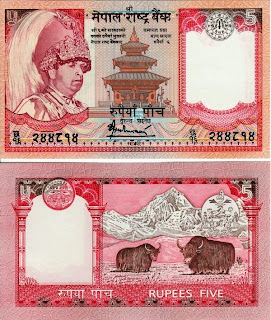


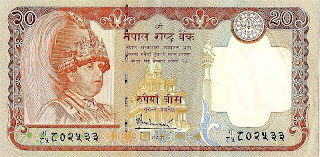
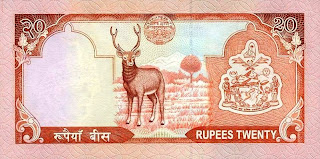-donatedsrb_b.jpg)
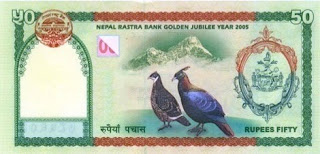



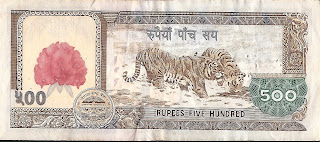


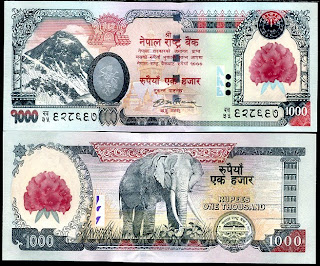

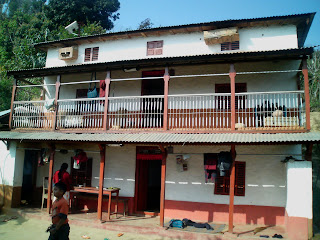






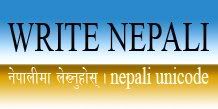
 Nepalese Rupee Converter
Nepalese Rupee Converter